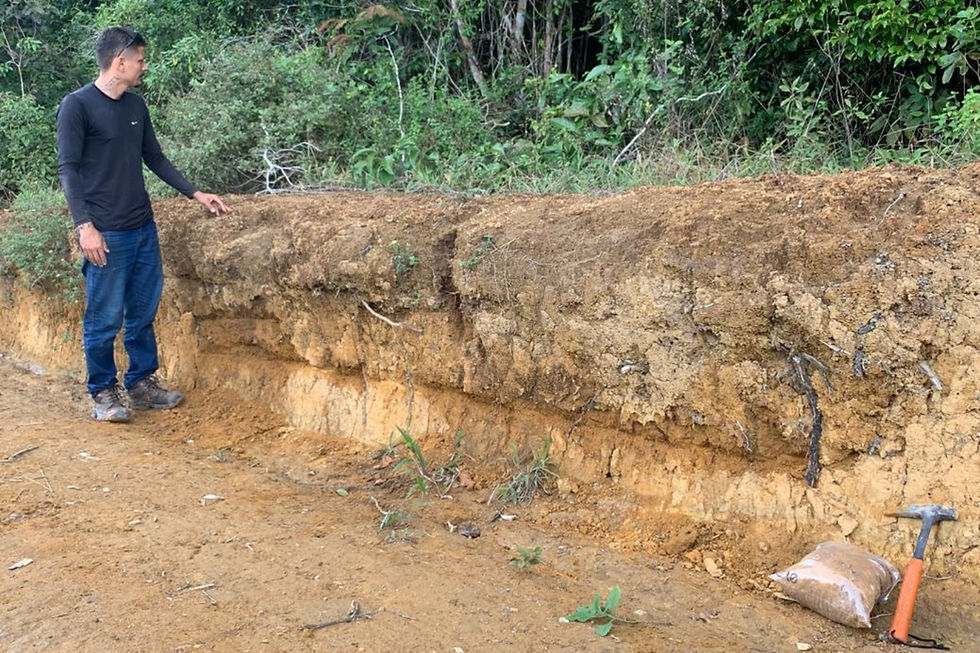
Gold Mountain (ASX: GMN) has picked up anomalous total rare earth oxides (TREO) values up to 1045 parts per million in 10 samples after a roadcut channel sampling program at the Irajuba tenement block within its Down Under project in Brazil.
The company says the results are significant because the anomalism mirrors responses from its recent stream geochemistry in the same drainage catchments. The comparative relationship revealed in the sampling campaign is most pronounced in the north-eastern sector of the block.
The high-value result came from a horizontal channel along a soil boundary below a heavily-vegetated and strongly-weathered soil horizon, demonstrating that rare earths values are concentrating in the lower part of the soil profile.
It means that while roadcut channel sampling typically produces a different tenor of result when compared with assessment from stream sediment samples from the same catchment, careful statistical treatment of both datasets can produce meaningful common anomalism in the same area. The practical field implication may be that roadcut or other soil profile sampling can be employed as supplementary or infill sampling across interfluves.
Gold Mountain says another highlight from the latest channel sampling program is that the magnet rare earth oxides (MREO) proportion of the TREO attains a peak content of 33.6 per cent, while its ratio of the valuable heavy rare earth oxides (HREO) reaches 19.1 per cent of the TREO – comparing favourably with results from nearby Brazilian Rare Earths’ MREO and HREO content.
The intensity of strong, near-surface leaching, especially in warm, temperate or sub-tropical environments that promote rapid vegetation growth, often results in thick acidic humic soil horizons where humic acids can take rare earths into solution and move them about, usually downwards.
Gold Mountain appears to be aware of that, referring to the Chemical Index of Alteration to outline the potential for strong downwards leaching of rare earths in its channel profiles, which all exhibit a high degree of weathering.
The company sees strong potential for rare earths concentration to increase downwards to a maximum at or near the saprolite transition zone between weathered and fresh rock. It means shallow drilling will be required to sample the deeper part of the profile near the top of and just into the saprolite zone.
The top of the saprolite can be highly variable and may even feature hidden scours from ancient drainages, or alternatively, could end up at or near the surface due to recent erosion of the soil horizons.
Management views its channel sampling results, in concert with the previous stream sediment responses, as marking a new approach towards defining potentially economic mineralisation at its rare earths resources, whether in high-grade monazite or clay-hosted ionic-absorption styles. The company is now planning additional auger drilling near its soil profile channel sample sites in a bid to reach below the leached parts of the soil profile and attain the saprolite zone.
It also plans to reanalyse significant intercepts for rare earths that are susceptible to desorption and to undertake radiometric surveys along its drill profiles. That is expected to pick up likely thorium associations from any monazite-rich occurrences.
Is your ASX-listed company doing something interesting? Contact: office@bullsnbears.com.au